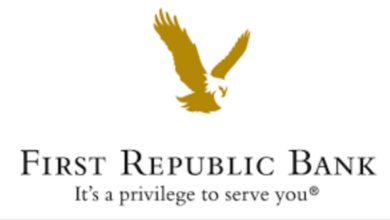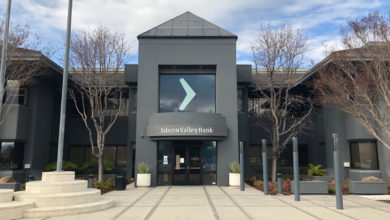 Recently, the Consumer Financial Protection Bureau announced that it is fining Wells Fargo bank $185 million dollars for widespread practices involving the opening of millions of checking accounts and credit cards without the knowledge or approval of the customer. This is the largest fine ever levied in the CFPB’s history and has resulted in Wells Fargo dismissing 5,400 employees or 1 percent of its workforce. The record setting size of the fine as well as the mass firing of thousands of employees show that this was not the work of a “few bad apples” but part and parcel of Wells Fargo’s sales culture. This may have come as a shock to some but as a one-time employee of Wells Fargo, my only surprise was how long it took for the regulators to identify the criminal activity.
Recently, the Consumer Financial Protection Bureau announced that it is fining Wells Fargo bank $185 million dollars for widespread practices involving the opening of millions of checking accounts and credit cards without the knowledge or approval of the customer. This is the largest fine ever levied in the CFPB’s history and has resulted in Wells Fargo dismissing 5,400 employees or 1 percent of its workforce. The record setting size of the fine as well as the mass firing of thousands of employees show that this was not the work of a “few bad apples” but part and parcel of Wells Fargo’s sales culture. This may have come as a shock to some but as a one-time employee of Wells Fargo, my only surprise was how long it took for the regulators to identify the criminal activity.
Speaking from experience I can say that Wells Fargo fosters a toxic, yet profitable, sales culture. Part of that sales culture is affectionately called “GREight”. This practice focused on ensuring each customer have a minimum of eight separate Wells Fargo products. Why?
Research shows that people are much less likely to leave a bank if they have to open eight new products and go through the trouble of transferring everything over. Our brand loyalty was based on inconvenience, not the drive to make a desirable product.
Another aspect of this sales culture is based on the structure of the Wells Fargo branch. Each branch is carefully divided into two sections, Service and Sales. Service is responsible for making sure all those pesky regulations which protect consumers are followed and Sales ensures said consumers walk away with as many products as possible. Moreover, the Service manager is subordinate to the Sales manager ensuring that the interest of the Sale’s side will always take priority over Service concerns.
This was for good reason as the Sales side was filled with a mania and panic due to the daily conference call with the district manager. In this call he would outline our insanely high sales goals and set us loose on the unsuspecting population. Those who missed the goal had to attend two additional calls with him throughout the day and explain what went wrong.
This ensured maximum humiliation for those who were falling behind as we were berated for not being more like those who “crushed their numbers.” Most of us on the calls secretly rolled our eyes as we knew full well why these number-crushers were never on with us. It was common knowledge that they engaged in a practice called “gaming” which is a less provocative word than “fraud.” An example is in order.
How ‘gaming’ worked
At my branch Spanish speaking customers would visit frequently and the Sales manager, who was the only employee who spoke Spanish, would make sure to sit down with them to chat.
After an involved conversation, he would come to another banker’s desk and tell them exactly what accounts to open. I was always impressed by how many accounts he managed to get from the customer but I chalked it up to his superior skill and shared language and culture.
Later my naivete was shattered when one of those customers returned with an English speaking family member. He was furious because he had received in the mail a declined credit card application but he was adamant he never applied for the credit card. These sorts of interactions became commonplace as time went on. I wanted to say something but was frightened at how it might impact my job. Or, even worse, the finger would end up getting pointed at me. After all, I had been the one to actually open the account.
However, a declined application need not be the end of the road for a customer. This is where Wells Fargo Financial (which was closed during the 2008 financial crisis) stepped into help. Wells Fargo Financial handled the “higher risk” loans which usually involved lower income customers with poor credit. We could forward a declined application to them to see if they could approve it. It was stated emphatically in our training that we had to get the customer’s permission before forwarding the application. My manager must have missed that day as I watched him forward the irate customer’s application to Wells Fargo Financial. He was smart enough to do it under my employee profile so as to have plausible deniability. I was scared.
Ethics?
Lucky for me Wells Fargo had instituted the “Ethics Line,” an 800 number any employee could call to report unethical behavior which I ended up calling. They listened to me and assured me they would take care of it. Later that year my Sales manager was promoted to a larger branch. So much for the Ethics Line.
At the time of my employment there were two such “Ethics” investigators assigned to the entire State of California, a state containing tens of thousands of employees. It was clear Wells Fargo’s level of dedication to Ethical business practices. This environment was too much for me and I managed to secure a position outside of Sales.
Fast forward three years later and I was working in operations. While I was no longer in Sales this did not protect me from the pervasive corruption that was the backbone of Wells Fargo’s vision and values. During that time I watched the CFO Howard Atkins abruptly leave Wells Fargo amidst allegations that he was underreporting Wells Fargo’s losses related to mortgage loans. Shortly thereafter the Wells Fargo employee pension plan was discontinued.
Later, my department was laid off as the newly acquired Wachovia operations could do our job for much less. Not to worry, Atkins got to leave with $22 million in options.
Wachovia deal
The acquisition of Wachovia bank was its own shady deal as well. During the 2008 crisis it became clear that Wachovia would soon fail. The vultures quickly started circling and Citibank made the first offer to the Fed. However, this offer was predicated on Wachovia failing first so that the Fed could seize its assets. This seizure would ensure Wachovia’s valuation to be rock bottom thus allowing Citibank to buy on the cheap. The Fed approved the deal and it was published in all the business newspapers the next day.
Enter Wells Fargo. Wells Fargo offered to buy Wachovia prior to seizure by the Fed which would save the Fed a great deal of money as they would not need to use FDIC funds. The Fed immediately agreed and Citibank was furious. A brief back and forth occurred in which Wells Fargo emerged the victor.
Wells Fargo ensured the purchase price took into consideration the massive money laundering fines that Wachovia was certain to have levied against it. The 2008 crisis opened everyone’s balance sheet and it became clear that Wachovia had assisted in laundering billions of dollars in drug money for various international cartels. Wells Fargo did not want to be left holding the bill and the Fed happily gave Wells Fargo a discount consistent with the $650 million money laundering fine Wells Fargo ended up “paying.”
The worst part was that Wells Fargo looked like the good guy who helped out the U.S. government and couldn’t really be blamed for Wachovia’s little money laundering problem.
After my unfortunate layoff I was able to secure yet another operational role at Wells Fargo. Part of this role involved reviewing mortgage loan applications that were made prior to the 2008 crisis. Government regulators were forcing Wells Fargo to air its dirty laundry and I was there to help with that process.
The universal element that each of the applications I reviewed consisted in the fact that Wells Fargo had done nothing to verify any of the statements made by its applicants. Customers could state they made six figures and were buying their first home and nothing was done to ensure this information was correct.
Looking back at mortgage applications after the 2008 crisis
As part of this “look back” Wells Fargo ran detailed credit reports to verify the information provided and there was plenty of inconsistent information. Given my experiences in the branch I could only wonder if the customers were misstating their incomes and assets or if bankers were writing down whatever it took to get the loan approved and their commission checks cut. We may never know.
Wells Fargo is one of the largest and most powerful institutions on earth. In 2008 the bank bailouts made it clear who the “public” funds belonged to. They belonged to the real owners of capital, the banks. They got there by the same means all capitalist success stories got there. Whether slave labor in the 18th century or cheap labor in the 21st, Wells Fargo got there by exploiting the working class, without which they could never afford the massive bonuses their executives receive.
It is important to realize this exploitation is not unique or aberrant. Indeed it is not even criminal given that no executives have faced jail time or personal fines. To succeed at the level of Wells Fargo or Chase one must engage in as many exploitative practices as possible to ensure the maximum portion of the market share. To fail to do this is to quickly be defeated by the financial institution that does.
Banks do not just cheat because it is profitable. They cheat because otherwise they will certainly lose out to a competitor who is less ethically squeamish. This is capitalism; not the pleasant platitudes of “free market” and “competition” but the daily realities of people in power doing whatever it takes to grow this power. This is why we do not need a kinder, better regulated, capitalism but a new system entirely, one in which the purpose of society’s wealth is not to generate record profits for the few but to provide a life of dignity and security for the many. This is socialism.





